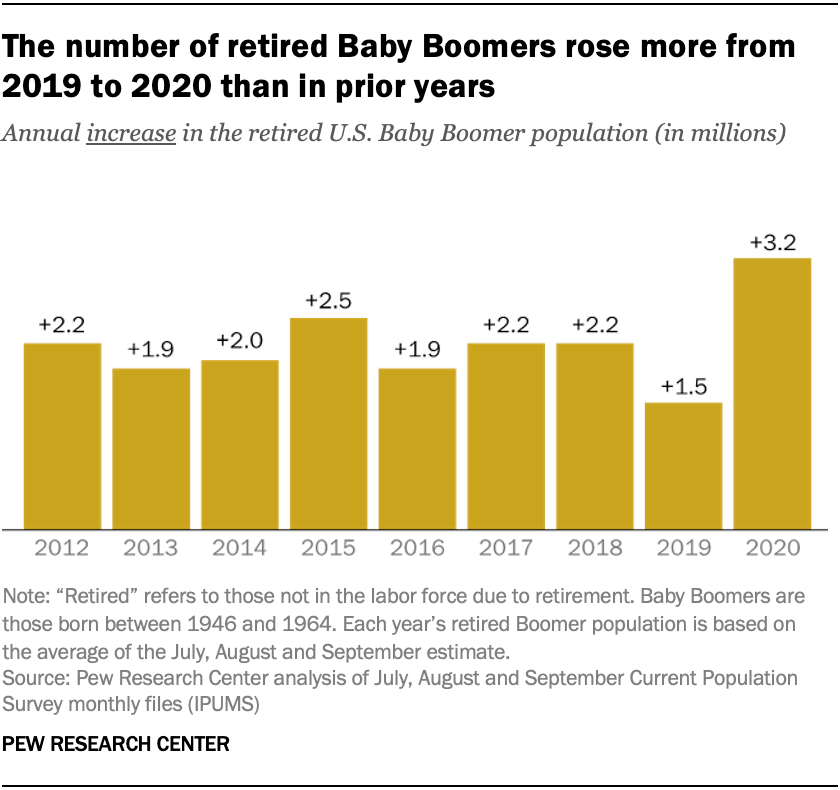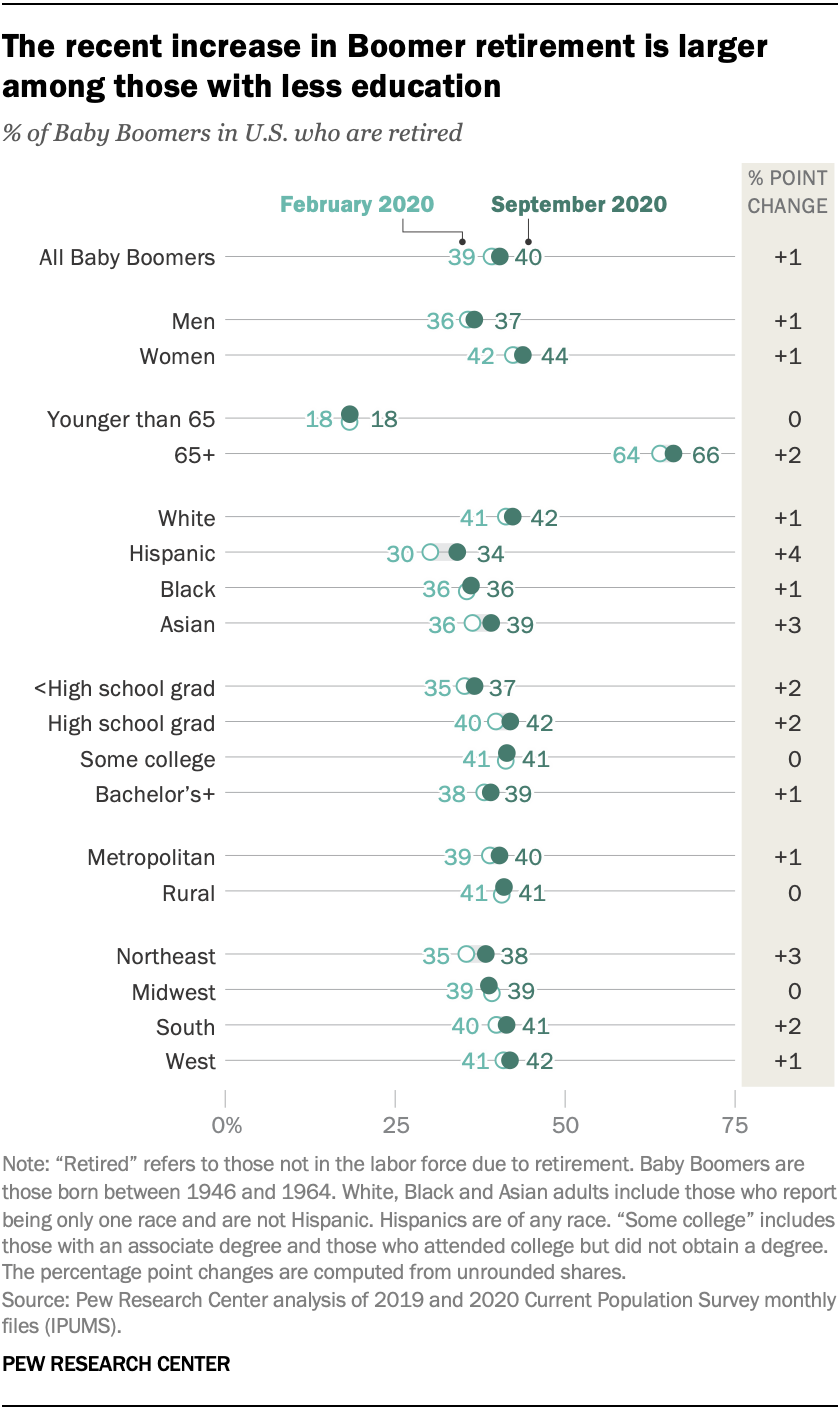
Millions of Baby Boomers retire each year from the U.S. labor force. But in the past year the number of retired Boomers increased more than in prior years, according to a Pew Research Center analysis of monthly labor force data. The recent increase in the share of Boomers who are retired is more pronounced among Hispanic and Asian American Boomers and those residing in the Northeast.

In the third quarter of 2020, about 28.6 million Baby Boomers – those born between 1946 and 1964 – reported that they were out of the labor force due to retirement.
This is 3.2 million more Boomers than the 25.4 million who were retired in the same quarter of 2019. Until this year, the overall number of retired Boomers had been growing annually by about 2 million on average since 2011 (the year the oldest Boomer reached age 65), and the largest increase was 2.5 million between the third quarter of 2014 and 2015.
How we did thisMore than 70 million Baby Boomers reside in the U.S. Since the time that the oldest Boomers reached age 65, there has been public interest in their impact on the nation’s labor force, public social insurance programs and asset values. The COVID-19 recession resulted in a large and sharp employment contraction across generations. This analysis looked at whether retirements had accelerated among Boomers during the pandemic.
The overall number of retired Baby Boomers is derived from the monthly Current Population Survey (CPS), conducted by the U.S. Census Bureau for the Bureau of Labor Statistics. The CPS is the nation’s premier labor force survey and is the basis for the monthly national unemployment rate released on the first Friday of each month. The CPS is based on a sample survey of about 60,000 households. The estimates are not seasonally adjusted.
“Retired” in this analysis is based on labor force status. Those who cite “retired” as the reason for not being in the labor force (neither employed nor seeking work) constitute the retired Boomer population. This is a moment-in-time measure, and increases reflect the net change of Boomers moving both into and out of “retirement” due to changes in labor force participation.
The CPS microdata files analyzed were provided by the IPUMS at the University of Minnesota.
The COVID-19 outbreak has affected data collection efforts by the U.S. government in its surveys, especially limiting in-person data collection. This resulted in about a 4 percentage point decrease in the response rate for the CPS in September 2020. It is possible that some measures of retirement and labor market activity and its demographic composition are affected by these changes in data collection.
The job losses associated with the COVID-19 recession may be contributing to the jump in Boomer retirements. Since February 2020, the number of retired Boomers has increased by about 1.1 million. Some of this increase could reflect seasonal change in employment activity. But during the February to September period last year, the population of retired Boomers rose by only about 250,000.
 is larger among those with less education" width="840" height="1410" />
is larger among those with less education" width="840" height="1410" />
In September, 40% of Boomers were retired, up from 39% in February. The recent increase in the share of those who have retired has been greater for some demographic groups. Among Boomers 65 and older, the share retired has increased 2 percentage points since February, whereas the retirement rate has remained unchanged among Boomers younger than 65 (18%).
The share of Boomers who have retired differs by educational attainment. Among those with no education beyond high school, the share is up 2 percentage points since February. There has been no change among those with some college education, and for those with a four-year college degree, the share is up 1 point.
The share of Hispanic Boomers reporting they are retired has increased 4 percentage points since February (30% to 34%). And the retirement rate among Asian Boomers has increased 3 points, from 36% to 39%. Retirement is up more modestly among White and Black Boomers (1 point for each).
Looking regionally, the movement into retirement appears most prevalent among Boomers residing in the Northeast (35% in February and 38% in September).